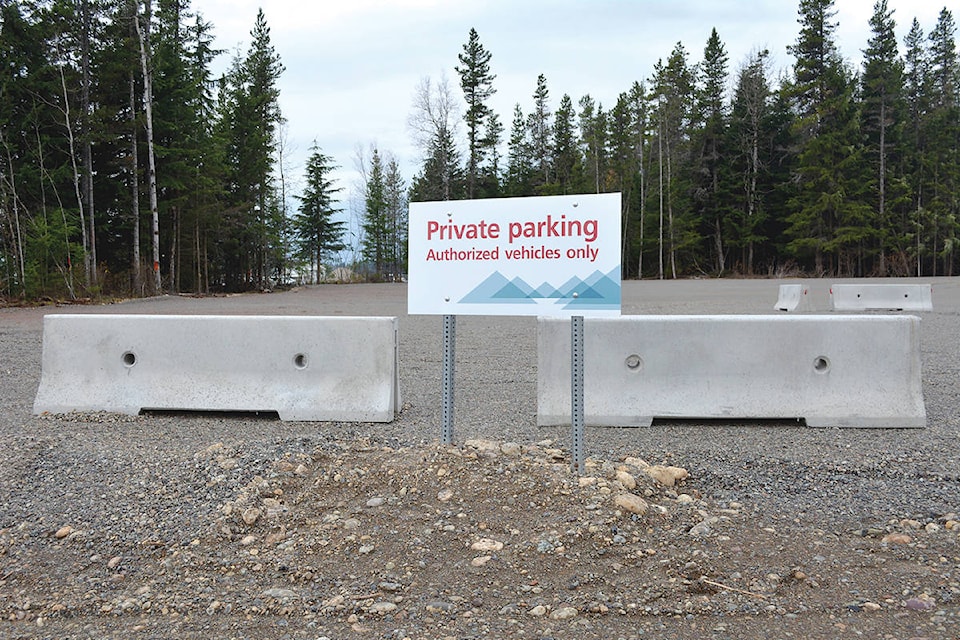The Northwest Regional Airport wants the companies building LNG Canada’s Kitimat liquefied natural gas plant to provide their own terminal facilities.
With as many as 4,500 workers needed for the project, a figure that could jump to 7,500 workers, the expected increase in air passenger traffic can only be handled at the airport should the companies provide their own facilities, says airport general manager Carman Hendry.
Although the airport has just finished a $18.5 million expansion at its main terminal building, which tripled the size of its passenger holding area and created three apron parking spaces for arriving aircraft, it was designed for organic growth in local and regional traffic and not the crush of a massive industrial project, said Hendry.
“We’ve already had discussions with the companies and the intent is not to create any issues for the regional community the airport serves,” Hendry added.
That not only applies to the demands on facilities brought on by large numbers of workers rotating in and out via air but on their social interaction and activities, he said.
“This can best be handled by having their own terminals,” Hendry continued.
The airport has already mapped out where construction company facilities can be built, an area to the left of the ‘T’ intersection where Max Neubacher Road meets Bristol Road, the airport’s main service road, past existing facilities such as the Canadian Helicopters building.
Hendry said land will be leased to the construction companies and buildings designed to the airport’s specifications.
“We’re doing that because when the [LNG Canada] project is finished, those buildings will revert to the airport,” he said.
The concept of standalone terminal buildings came about after airport officials toured the airport at Fort McMurray, where a flood of large-scale oilsands projects vastly increased air traffic demands and visited one large camp with its own runway.
“We saw that having companies use our terminal was not a good idea,” said Hendry. “Having their own takes a lot of pressure off of the community.”
And expanding the airport’s own facilities here to accommodate the largely temporary demands of large industrial projects would not be a sound business practice, he added.
“When we did our [2014] master plan we were looking 20 years out for regional growth. Mining, for instance, we know is long-term,” Hendry said.
LNG Canada already has a small footprint at the airport by leasing parking space for vehicles in the area of the airport’s long-term parking lot.
Hendry said revenues from leasing land for LNG-related terminal buildings and from passenger fees charged for LNG workers will help finance a 10-year plan calling for $60 million in improvements at the airport.
That covers everything from improvements on Max Neubacher Way, the main access road to the airport from Hwy37, other road work, paving the long-term parking area to handle up to 800 vehicles, improving water and sewer facilities, renovating buildings such as the one which houses the airport’s maintenance shop, and in the next anticipated construction project, expanding the airport’s arrivals section and renovating adjacent airport administration office space.
“Having those revenues will help fulfill our master plan,” said Hendry, adding the goal is to spend wisely.
“Our goal is to be self-sustaining. We won’t be spending any money we don’t have,” he said.
LNG Canada director external relations Susannah Pierce said the company had anticipated there would be increased traffic at the airport as a result of LNG Canada’s construction activities, particularly during the peak construction period in two to three years’ time.
“LNG Canada is committed to minimizing the impact to the local community and will continue to work with the airport to pursue options to reduce impacts, including reviewing schedule rotations, using charter flights and exploring with the airport and airlines the potential to increase the number of commercial flights,” said Pierce.
She said LNG Canada had identified a number of specific measures in its Community Level Infrastructure and Services Plan (CLISMP) to minimize the impact its activities would have on the airport.
- with files from Gerry Leibel
